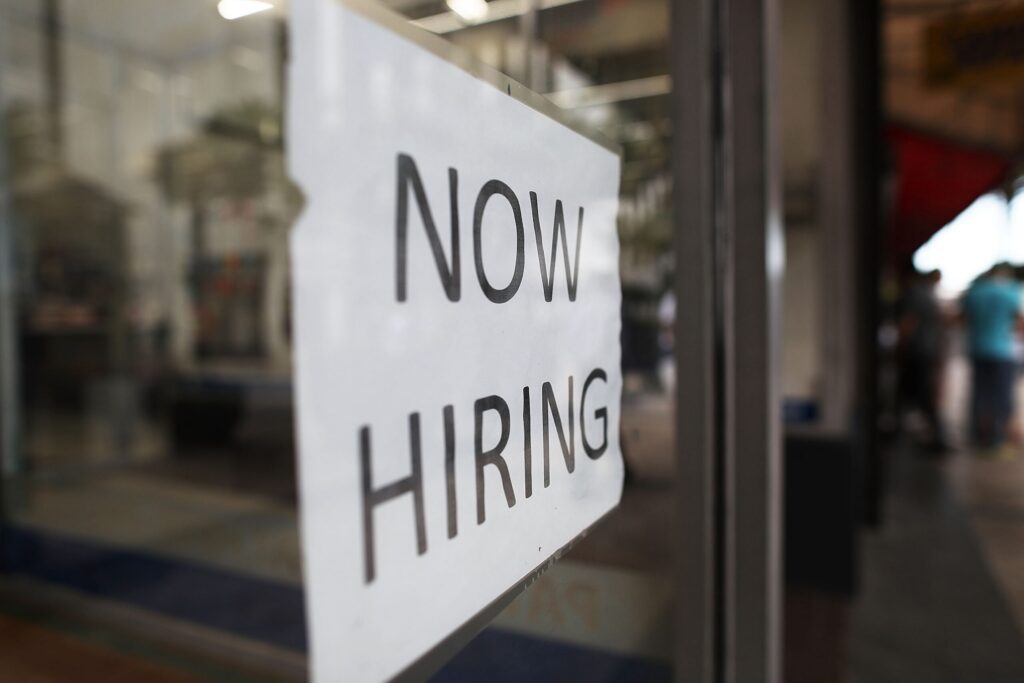The U.S. Bureau of Labor Statistics released a report showing a strong labor market with growing wages, a lower unemployment rate, and the addition of 254,000 jobs to the economy. (Photo by Joe Raedle/Getty Images)
A month before voters cast their ballots, the U.S. Bureau of Labor Statistics released a report showing a strong labor market with growing wages, a lower unemployment rate, and the addition of 254,000 jobs to the economy.
Eighty-one percent of registered voters say the economy is key to their vote for president this fall, according to a September Pew Research report.
“We saw job creation beating expectations, unemployment rate ticking ever so slightly down, and we saw great wage growth which has continued to outpace inflation,” said Kitty Richards, senior strategic advisor at Groundwork Collaborative, a progressive economic policy think tank. “We don’t have the new inflation numbers for last month, but wage growth is strong and has been outpacing inflation for about 16 months now and those are all really good things.”
The unemployment rate in September was 4.1% compared to 4.2% in August and 4.3% in July. A rising unemployment rate earlier in the year had caused some economists to worry that the Federal Reserve’s decision in the past few months not to cut the federal funds rate was beginning to hurt the labor market. In September, the Fed decided to cut the rate by half a percentage point, allaying those worries.
The Fed began an aggressive campaign to beat inflation by raising rates in March 2022 and stopped in mid-2023. But the rate remains high and has affected the economy, particularly the housing market, economists say. Inflation has significantly cooled since its peak in June 2022.
“If today’s job report had said that the labor market was softening further, I think a lot of us would be more aggressively concerned about the risks posed to the labor market by high interest rates,” Richards said. “It’s great to see that those risks have not tipped over yet … But there are risks and we need to be really mindful of what it would mean if we started to see the unemployment rate picking up again.”
The report also showed continued job growth in health care, government, social assistance and construction last month. Wage growth was strong, rising 4% over the past year. Adult men saw their unemployment rate fall, at 3.7%, last month. Women, Black people, Asian people, white people, Hispanic people, and teens all had little or no change in their unemployment rates in September.
The prime-age employment-to-population ratio, which is a measure of how well the economy provides jobs for people who are interested in working, remains at a 23-year high in Friday’s jobs report.
“I think the labor market continues to be healthy and strong and it’s great to see labor force participation and employment-to-population rates staying high,” Richards said. “That’s what we want to see in the kind of economy that is going to drive wage gains for working people and continue some of the gains that we’ve seen since the COVID recession.”
But she added that there is still room for those measures to grow.
“We’ve seen that the economy can outperform what a lot of people thought before we had this really prolonged period of low unemployment coming out of the COVID recession. And I hope that we continue to see this kind of growth,” she said.

